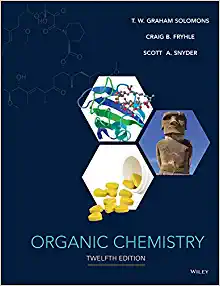Olestra is a fat substitute patented by Procter and Gamble that mimics the taste and texture of
Question:
Olestra is a fat substitute patented by Procter and Gamble that mimics the taste and texture of triacylglycerols. It is calorie-free because it is neither hydrolyzed by digestive enzymes nor absorbed by the intestines but instead is passed directly through the body unchanged. The FDA has approved olestra for use in a variety of foods, including potato chips and other snack foods that typically have a high-fat content. It can be used in both the dough and the frying process.
(a) Olestra consists of a mixture of sucrose fatty acid esters (unlike triacylglycerols, which are glycerol esters of fatty acids). Each sucrose molecule in olestra is esterified with six to eight fatty acids. (One undesirable aspect of olestra is that it sequesters fat-soluble vitamins needed by the body, due to its high lipophilic character.) Draw the structure of a specific olestra molecule comprising six different naturally occurring fatty acids esterified to any of the available positions on sucrose. Use three saturated fatty acids and three unsaturated fatty acids.
(b) Write reaction conditions that could be used to saponify the esters of the olestra molecule you drew and give IUPAC and common names for each of the fatty acids that would be liberated on saponification.
(c) Olestra is made by sequential transesterification processes. The first transesterification involves the reaction of methanol under basic conditions with natural triacylglycerols from cottonseed or soybean oil (chain lengths of C8–C22). The second transesterification involves the reaction of these fatty acid methyl esters with sucrose to form olestra. Write one example reaction, including its mechanism, for each of these transesterification processes used in the synthesis of olestra. Start with any triacylglycerol having fatty acids like those incorporated into olestra.
Step by Step Answer:

Organic Chemistry
ISBN: 978-1118875766
12th Edition
Authors: T. W. Graham Solomons, Craig B. Fryhle, Scott A. Snyder





